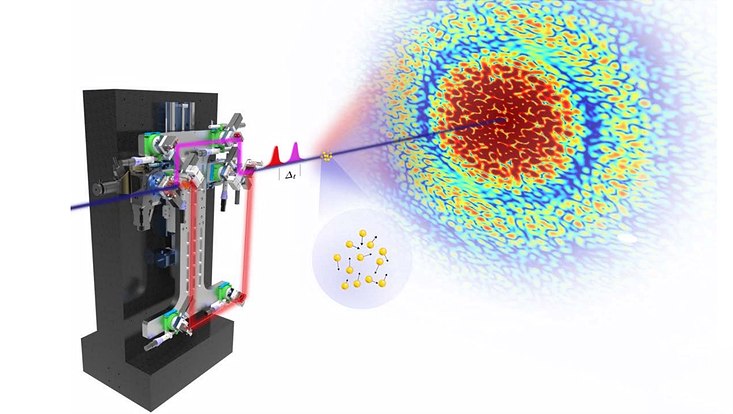Time for a new state of matter in high-temperature superconductors
10 November 2020

Photo: UHH\Ludwig Mathey
Scientists from the University of Hamburg have pointed out how to create a time crystal in an intriguing class of materials, the high-temperature superconductors. They propose to drive these superconducting materials into a time crystalline state by inducing Higgs excitations via light. The work is reported in the journal Physical Review Research.
When you cool down liquid water, it crystallizes into ice. Consider a bucket filled with water, for example. When the water is liquid, the water molecules can be anywhere inside the bucket. In this sense, every point inside the bucket is equivalent. Once the water freezes, however, the water molecules occupy well-defined positions in space. Thus, not every point inside the bucket is equivalent anymore. Physicists refer to this phenomenon as spontaneous symmetry breaking. Here the translation symmetry in space is broken by the formation of the crystal.
Is it possible for crystals to form in time instead of space? While it appears like an outlandish notion, it turns out that a time crystal may emerge when a physical system of many interacting particles is periodically driven. The defining feature of a time crystal is that a macroscopic observable, such as the electric current in a solid, oscillates at a frequency that is smaller than the driving frequency.
So far, time crystals have been realized in artificial model systems. But now, what about real systems? A piece of a high-temperature superconductor is such a real system - you can buy it online. It is not much to look at, with its brownish, rusty color. Yet its frictionless electron flow at temperatures up to 100 K (‑173 °C) constitutes one of the most spectacular phenomena of material science.
“We propose to turn a high-temperature superconductor into a time crystal by shining a laser on it”, explains first author Guido Homann. The frequency of the laser needs to be tuned to the sum resonance of two fundamental excitations of the material. One of these excitations is the elusive Higgs mode, which is conceptually related to the Higgs boson in particle physics. The other excitation is the plasma mode, corresponding to an oscillatory motion of electron pairs, which are responsible for superconductivity.
Co-author Jayson Cosme adds that “the creation of a time crystal in a high-temperature superconductor is an important step because it establishes this genuine dynamical phase of matter in the domain of solid-state physics”. Controlling solids by light is not only fascinating from a scientific perspective but also technologically relevant, as emphasized by group leader Ludwig Mathey. “The ultimate goal of our research is to design quantum materials on demand.” With their novel proposal, this fascinating endeavor is now advanced towards dynamical states of matter, rather than the usual static states of matter, by laying out a strategy to design time crystals instead of regular crystals, which opens up a new and surprising direction of material design.
Original publication:
"Higgs time crystal in a high-Tc superconductor"
Phys. Rev. Res. 2, 043214 (2020)
URL: https://link.aps.org/doi/10.1103/PhysRevResearch.2.043214
DOI: 10.1103/PhysRevResearch.2.043214
G. Homann, J. G. Cosme, and L. Mathey


